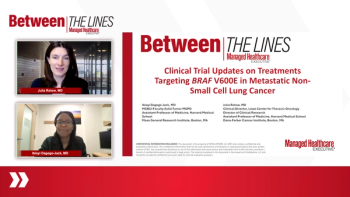
Payer-Provider Collaboration Driving Biosimilar Utilization
Discussion on how payers and providers collaborate to enhance patient care and cost management. The upcoming entry of biosimilars post-2023 and their potential influence is also covered.
Episodes in this series

Timothy O’Shea, PharmD, MS: Payers and providers working together is going to be one of the most impactful things that can be done to optimize outcomes and in this case, drive use of a biosimilar or unbranded biologics. That's something that we did in my role at Horizon Blue Cross Blue Shield, where we worked with the leading providers in our market to ensure the biosimilars we were preferring on our formulary were the same biosimilars that they were using within their health systems. We knew if we didn't, [the patient is] going to get caught up in a place of members caught in the middle where providers are using a biosimilar that's not on the payer's preferred product formulary. Then of course, as we moved to a value-based care, there's a clear incentive for all parties to use biosimilars to reduce the total cost of care.
Timothy O’Shea, PharmD, MS: The pipeline is robust when looking at biosimilars. So if we think in the short term, the next 6 to 12 months, we can see a handful of biosimilars in categories where we have biosimilars today. Neupogen, Neulasta, Remicade, we could see additional biosimilars in terms of new biosimilars over the next 6 to 12 months, could see biosimilars for Neulasta on body biosimilar, could see biosimilars for Tysabri, Actemra, and Eylea and collectively that represents about $15 billion in annual sales. Looking a little bit further out in 2024 and 2025 could see biosimilars for Xolair, Simponi, Soliris, Stelara, Prolia and collectively that represents over $30 billion in annual drug sales and still are being about $18 billion of that. We had hoped to see Stelara biosimilars as early as the end of 2023. Unfortunately, that got pushed back due to settlement agreements to 2025. Looking even further out into 2027 and beyond, could see I would expect to see the Enbrel biosimilars in 2029. In 2027, could see biosimilars for Entyvio, Cimzia, and Ocrevus. With all of those products, certainly nothing's a guarantee. Many of these may get caught up in a lot of the issues that the current biosimilars that we have today went through. But those are least the earliest look of the pipeline for when we could see.
Transcript is AI-generated and edited for clarity and readability.
Newsletter
Get the latest industry news, event updates, and more from Managed healthcare Executive.





















































